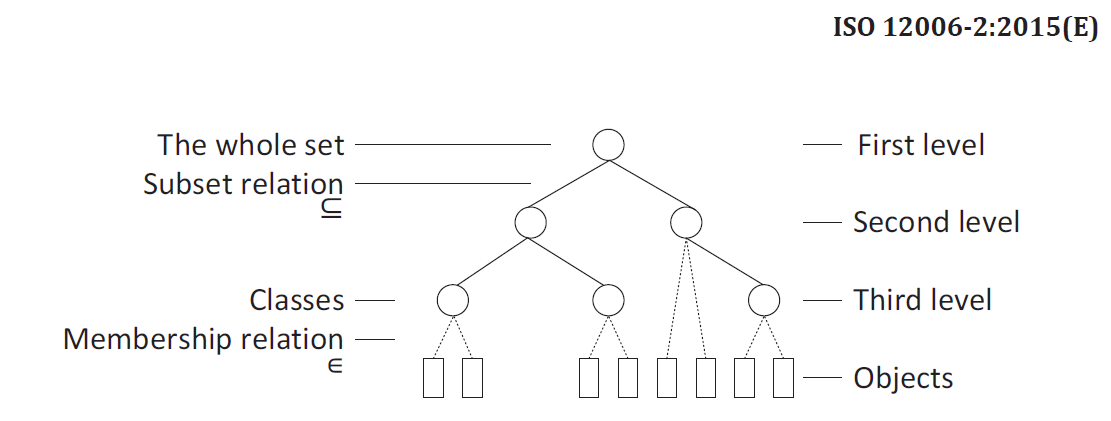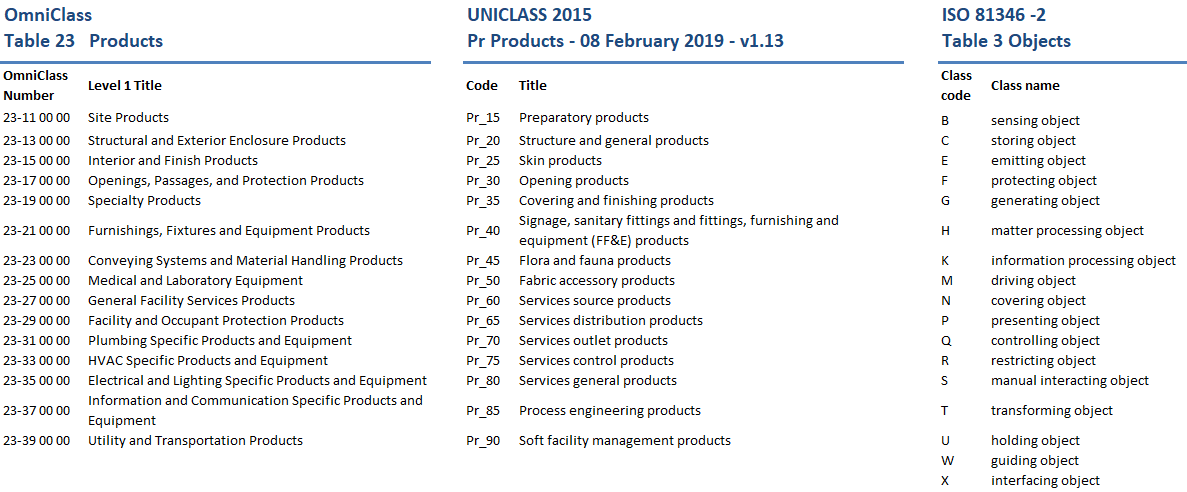As a step towards understanding the advantages and disadvantages of the most popular building classification systems, let’s look at how they are structured.
OmniClass, used in AEC in North America, has 15 tables on varied facets of construction information. Uniclass 2015, the U.K. building industry classification system, has 10 tables. And the ISO/IEC 81346 international standard (with part 12 for construction and building services) has 4 main tables.
A table can be used separately to classify a certain category of information, or, for more complex objects, entries in one table can be combined with those in other tables of the same system.
To analyse the differences in systems, it’s best to compare similar tables – let’s take the ones for classifying building components or modules (construction products):
- In OmniClass that’s table 23 (published May 2012).
- In Uniclass 2015 it’s the product table “Pr” (taking v. 13 of Feb. 2019).
- In ISO 81346-2 it’s the third table (v. 2, dated June 2018).
ISO 12006 describes how classification systems should be structured in hierarchical levels. The main goal is to put elements in groups so an object’s type can be recognized. Classes and sub-classes should divide elements up by unique traits. That means objects classified the same way in the same classification system cannot belong to different groups. The criteria used to group elements is key: it may be their function or purpose, the material they’re made of, or some other distinguishing trait.

The three tables we’re comparing all arrange data in multiple levels, like a tree with branches. Their hierarchical structure enables the classification of everything related to construction: from large architectural or infrastructure objects (like a university campus or a road network) to small details like connectors, paving stones and road edges. The OmniClass table currently has 7 structural levels, the Uniclass 2015 table has 4, and the third table in part 2 of ISO 81346 has 3 levels.
Looking at the tables’ first (top) levels, we see that OmniClass table 23 groups some elements according to their location in a structure and others according to function or use.
The first level of the Uniclass 2015 table also uses multiple different criteria for grouping: in some cases it’s an elements use, in others it’s the function they perform, and so on.
Grouping in level 1 of the ISO 81346-2 table uses the single criteria of function – it looks at an element’s functional purpose, e.g. to protect, cover, hold, or direct.

